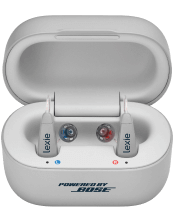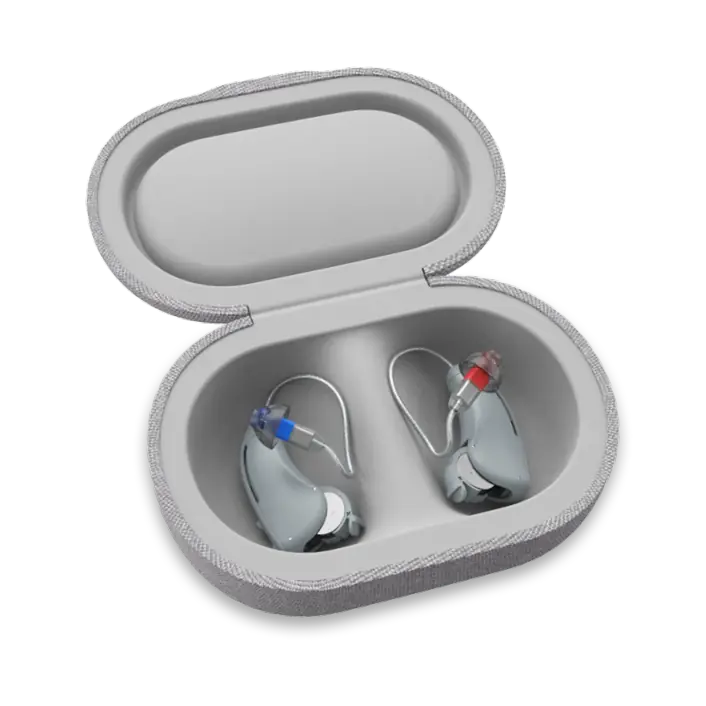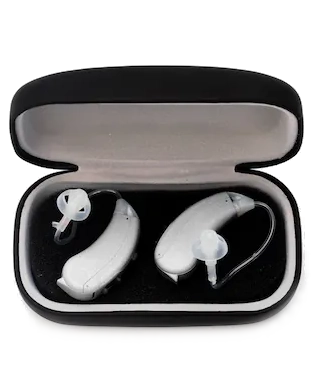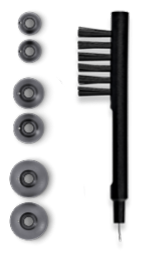What Part of the Brain Controls Hearing?
Published: August 27, 2020
Updated: July 19, 2022
Many people know that sound travels through the ear and becomes hearing. What they don’t realize is that the ears hear, but it is the brain that does the listening.
What part of the brain controls hearing
Your brain is wired to make sense of all the sounds that travel through your ear. That enables you to understand speech, communicate, appreciate music, and enjoy the sounds of nature. Your brain is wired to listen, and you are wired to communicate.
Maybe your mother or your teachers also used to say, “You look, but you don’t see. You hear, but you don’t listen.” Turns out they were right, we often do hear but struggle to listen.
How the brain controls hearing
Which part of the brain handles this wiring that helps us to listen and interpret the sounds that we hear? Here’s a great illustration that shows exactly how the brain hears and how hearing works.
Sounds travel through your ear canal, the eardrum vibrates, and this sets the bones in the middle ear into motion. Tiny hair cells in the cochlea move depending on whether it is a low-, middle-, or high-tone sound. These motions activate neurons in your hearing nerve, also called the auditory nerve. It then crosses to the other side of your brain where the auditory or hearing part of the brain interprets it as speech, music, or sounds. This area is on the side of your head, just above the ear, and is called the auditory cortex.
The brain can interpret different tones or frequencies and can fill in the parts you may have missed. The brain also has the remarkable ability to change depending on the stimulation it receives. Over time, it adds meaning to the incoming information and uses it optimally. This is called neuroplasticity of the brain.
When you have hearing loss, the hearing areas in the brain are not optimally stimulated with sound or speech. As a result, your listening skills are not used to staying focused. The hearing areas then begin to reorganize and tune in to other tasks to function optimally. Instead of using the hearing areas for hearing, the brain may use them to rather focus on vision or smell.
Hearing aids can help to stimulate the hearing areas in the brain for better listening. That’s why it is vital to use a hearing aid or other amplification device as soon as you discover your hearing loss. You need to keep stimulating the brain with sound to keep your listening abilities sharp and tuned for hearing. Listening is all about the brain.

Have you ever wondered if you have a hearing loss? You can take Lexie’s free online hearing test right from your device. Click here to take the test now.
How a hearing aid and amplification can revive listening
Following a hearing aid fitting, many people are surprised at all the sounds they can suddenly hear. After receiving a hearing aid or amplification device, your brain gives a lot of attention to the new sounds it could not hear before. This stimulation of sound is good for the brain as it helps to tune in to sound again. This time may be tiring, as the brain needs time to get used to all these sounds and add meaning to all the new information. You may feel tired towards the end of the day while adapting to your hearing aid. Most people report that it gets easier to listen after a few weeks of consistent hearing aid use and that they feel less tired. It means they have adapted to the new sounds and improved hearing.
It’s also a good sign if you miss your hearing aid when you’re not wearing it. This is because listening has started to improve. The brain now realizes which information to keep and which to discard. Important information will be speech sounds, conversations, music, and meaningful sounds. Information that isn’t important, like background noise, will be less noticeable over time.
The brain also helps to fill in the missing bits that you can’t hear so well. Better hearing helps the brain to do this. A properly fitted hearing aid will send a stronger or amplified signal to the brain. It then adds meaning to the signal over time and supports better listening. A combination of good-quality hearing aids and listening practice can help to revive hearing and listening.
Tips to be a better and more active listener
Active listening helps to support the brain with the hard work of making sense of conversations and adding meaning to messages. Getting better at listening and understanding how hearing works also helps to build better relationships with our loved ones and people we talk to. You can support your hearing and listening by being a better hearing “aide”. The following cues and tips can help for more active listening.
- Listening with all your senses: You can show more interest when talking to other people by using verbal and non-verbal messages. This includes eye contact, nodding your head, smiling, agreeing, or acknowledging that you understand them. Feedback like this will help the person talking to you to feel more at ease and communicate easily, openly, and honestly.
- Posture and body language: Information is not only conveyed by verbal messages. We all know how important non-verbal body language is for active listening. An attentive listener will lean into the conversation and show openness to receive a message.
- Mirroring and reflecting: We learn language through copying and imitation. We unconsciously mirror someone’s facial expressions to encourage communication and show that we are listening. These reflective expressions help to show sympathy and empathy in difficult conversations. Repeating or rephrasing what someone is saying reinforces their message. It shows understanding and active listening.
- Not being distracted: An active listener will focus during a conversation and not fidget, look away, or at their phone while talking. It can be very difficult to talk to someone who is distracted and not giving attention when you talk to them. Reading messages or browsing on your phone when socializing can derail active listening. It prevents the building of strong relations with others.
- Reinforcement and questioning: Elaborate and explain why you are agreeing with a certain point. It demonstrates active listening and keeps the conversation going. Appropriate questions support active listening and interaction and help to clarify miscommunication.
- Remembering/memorizing: Nowadays, many find it harder to memorize information. This is because we have so many resources that help us to store information. Try and remember the topic of a conversation and details like names and ideas. It shows attentive listening and encourages communication that supports memory and ideas.
- Clarification and summarizing: If you are unsure about a message, don’t shy away from asking questions to clarify and help the speaker to expand. If you missed a part of the conversation, you can clarify by saying “I heard you are talking about your holiday, but missed where you have been?” It is much better to clarify than to keep on saying “Huh?” or “Excuse me?” You can also summarize to make sure you’ve heard correctly. For example, “Have I heard correctly that you will visit me on Tuesday afternoon?”
“I’m all ears!”
Playing it by ear means you have no game plan – you act spontaneously and according to the situation. That works well if you are a musician and can play a beautiful piece of music by ear. To be an active listener and help your brain with hearing, you need to have a strategy. You need to understand how hearing works, and how to listen attentively to conversations and sounds.
Lexie Hearing
While it’s easy to learn the theory, it’s hard to be an active listener if you are hamstrung by difficulty hearing. With Lexie hearing aids, you get a complete hearing solution: quality hearing aids at an affordable price and unlimited access to remote support. With Lexie hearing aids, you’ll have better hearing, which will allow you to practice active listening, and develop your relationships with those who matter most to you.
Find out more today, and try Lexie hearing aids risk-free for 45 days.






